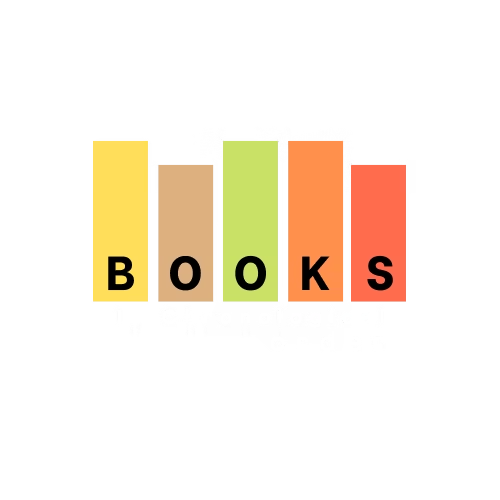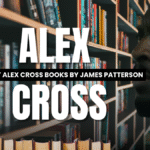Read every series in the right order

Publication Order vs Chronological Order: How to Choose the Best Reading Sequence
Table of Contents
If you’ve ever picked up a book from a popular series and felt unsure whether to start with the original release or a prequel set decades earlier, you’ve already faced the classic debate: Publication Order vs Chronological Order.
This choice can significantly shape your reading experience. Publication order reflects how the author intended the story to unfold, building suspense and character arcs gradually over time. Chronological order, on the other hand, follows the events of the story as they happen in-universe, offering a more linear, immersive timeline.
Whether you’re diving into expansive fantasy worlds like Shannara, action-packed sci-fi like The Expanse, or morally complex sagas like The Fowl Adventures, choosing between publication and chronological order is more than a technical decision—it’s a storytelling preference. This guide will help you understand both approaches and decide which path best fits your reading goals.
What Is Publication Order?
Definition: Publication order means reading books in the sequence the author or publisher originally released them.
Why Choose Publication Order
- Preserves the author’s narrative arc. Twists and reveals happen as intended.
- Follows the evolution of voice and theme. Watch the author’s style mature.
- Safer for first-time readers. Avoids premature reveals from later additions.
Best-Fit Examples from Our Guides
| Series | Why It Works |
|---|---|
| Artemis Fowl | Artemis’s moral arc unfolds gradually across the original publication timeline. |
| The Sword of Shannara Trilogy | Prequels add lore, but the trilogy introduces the world as intended. |
| The Empyrean Series | Each book builds on secrets revealed in the prior entry—timing matters. |
What Is Chronological Order?
Definition: Chronological order aligns books by the timeline of events within the story world, regardless of release date.
Why Choose Chronological Order
- Gives a smooth, in-universe narrative. Especially helpful for complex timelines.
- Ideal for re-reads. See hidden connections with fresh context.
- Deepens worldbuilding immersion. Backstory becomes forestory.
Best-Fit Examples from Our Guides
| Series | Why It Works |
|---|---|
| Shannara | Begins with Word & Void centuries before The Sword of Shannara. A full-arc view clarifies legacy themes. |
| The Fowl Adventures | Artemis’s evolution—from criminal prodigy to hero—is more pronounced when followed linearly. |
| The Wrath and the Dawn | Companion novellas and duology events mesh more clearly in a timeline-based read. |
Pros & Cons Matrix – Publication Order vs Chronological Order
| Reader Type | Publication Order | Chronological Order |
|---|---|---|
| New Readers | Preserves surprises. May delay backstory clarity. | Easier narrative flow. Prequels may spoil twists. |
| Re-Readers | Enjoy authorial growth. | See deeper story logic. |
| Scholars/Analysts | Follow theme evolution. | Track causality and world lore. |
Deep-Dive Case Studies
Sometimes, choosing the wrong order can flatten character arcs or dilute suspense. Here are two series where your reading path significantly affects the experience—both covered in our in-depth reading guides:
Case Study: The Sword of Shannara by Terry Brooks
In this sprawling epic, the story technically starts with the Word & Void trilogy—modern-day urban fantasy set centuries before magic reawakens. But Terry Brooks originally released The Sword of Shannara as the entry point. Reading in chronological order gives you historical context for the world’s evolution from tech to magic. Reading in publication order better preserves pacing, mystery, and the nostalgic fantasy tropes that launched the franchise.
Bottom Line: New readers may prefer starting with Sword. Worldbuilding buffs may begin with Running with the Demon.
Case Study: The Fowl Adventures by Eoin Colfer
Artemis’s journey spans eight books plus a follow-up trilogy starring his twin brothers. Colfer wrote the original series as a transformation arc—from criminal genius to hero. Reading in publication order matches this growth with thematic and tonal evolution. But chronological order enhances continuity, especially as younger readers grow into the darker later books (The Time Paradox, The Last Guardian).
Bottom Line: First-time readers should follow publication. Re-readers might try chronological for a tighter emotional arc.
How to Pick Your Reading Order
Ask Yourself:
- Do I want the author’s version of the journey—or the character’s?
- Is this my first time reading the series?
- Do prequels spoil anything?
- Do I plan to read everything?
Tips & Tools
- Read the author’s foreword. Some offer guidance on order.
- Use Goodreads or StoryGraph to filter by publication year.
- Download our Reading Order Glossary to understand terms like “1.5 novella” or “retcon.”
FAQs About Publication Order vs Chronological Order
Can I switch between orders mid-series?
Yes. Many readers start with publication and switch to chronological on a second read-through.
Why do boxed sets sometimes use different numbering?
Publishers often reorder books for marketing clarity, not narrative impact.
Should I skip companion novellas?
Not always. We flag “must-read” vs. “optional” in every guide.
What if the author’s preferred order contradicts publication?
Trust the author—unless you’re chasing publication nostalgia.
Conclusion & Next Steps
There’s no one-size-fits-all. Whether you’re a timeline purist or a fan of the author’s slow-burn build, the best reading order is the one that keeps you excited to turn the page.
Need help choosing? Start with our guides to:
Or browse our full Series Index for more.







